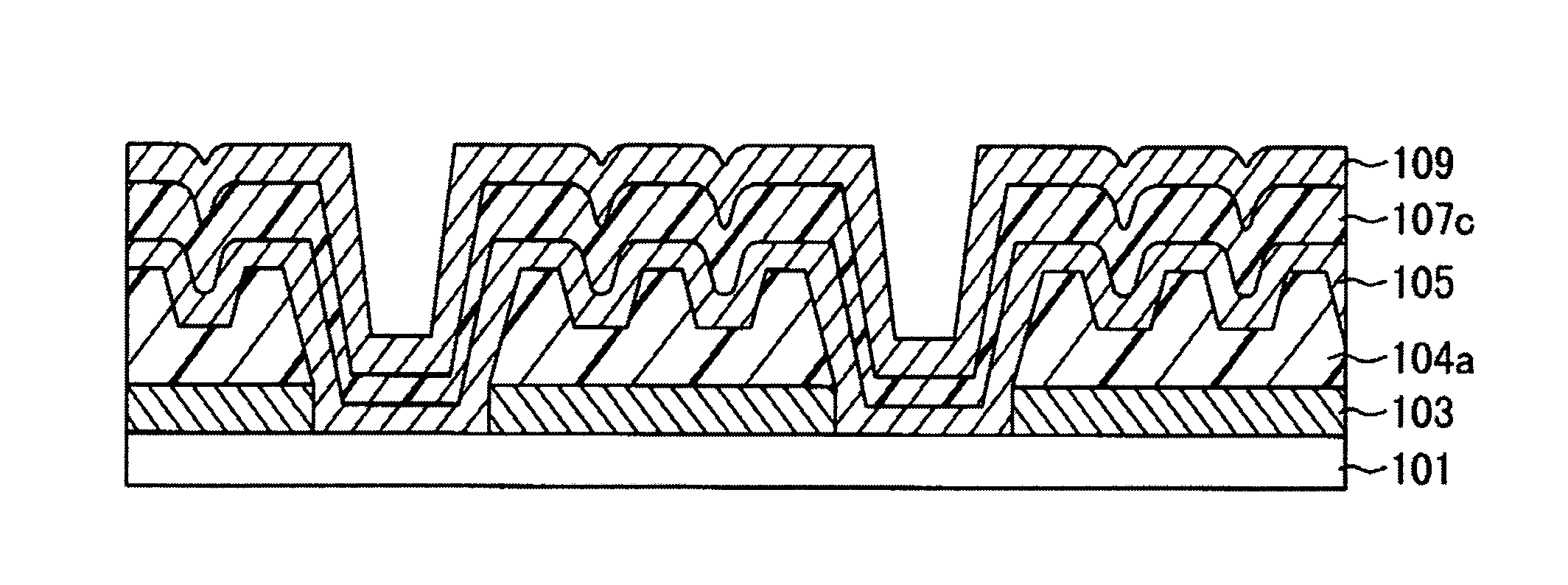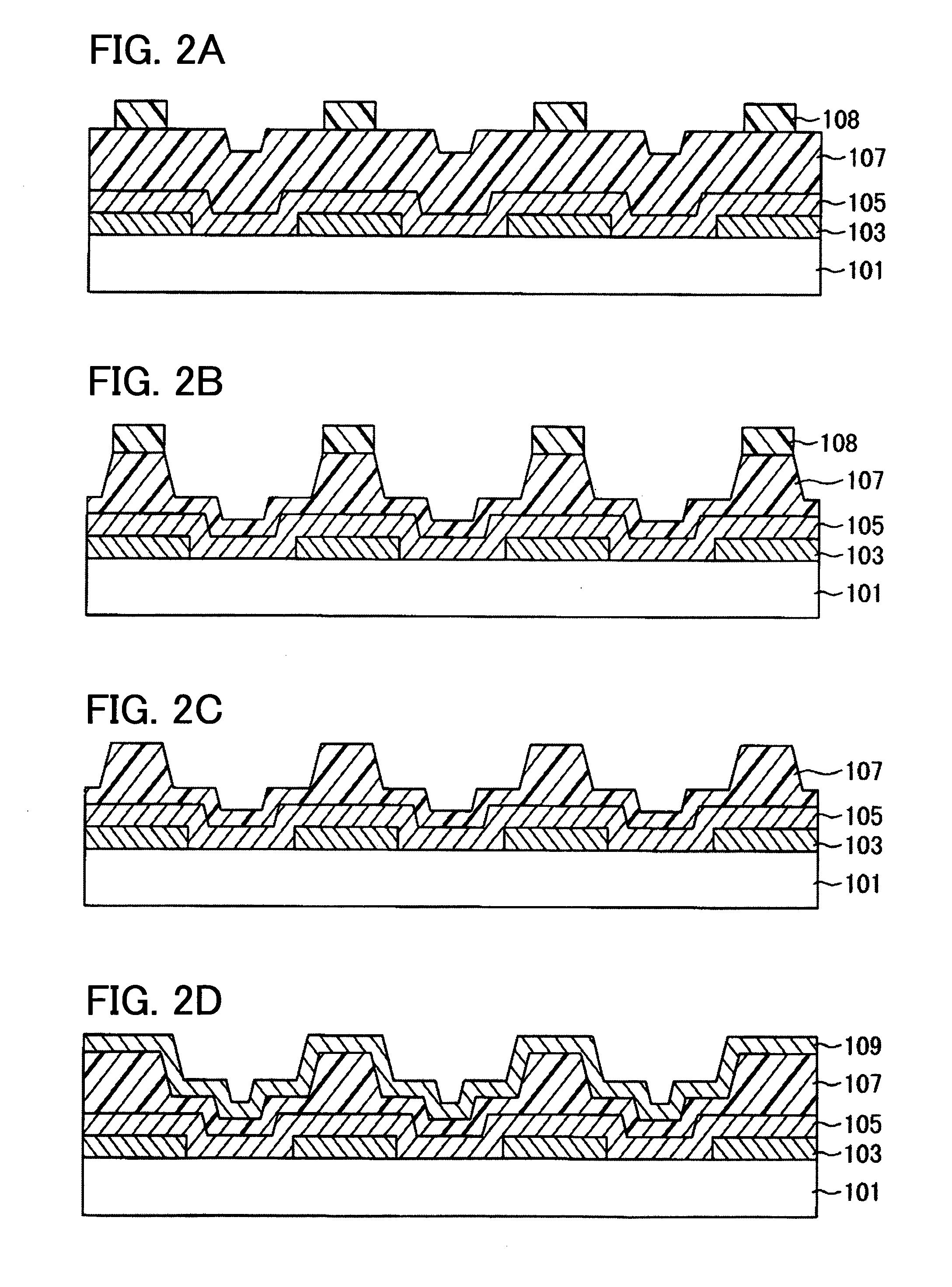Method for manufacturing light-emitting device and film formation substrate
a technology of light-emitting devices and film formation substrates, which is applied in thermoelectric devices, instruments, record information storage, etc., can solve the problems of difficult application of the method to a high-definition display device, and the lack of very high-precision film formation, so as to improve the patterning accuracy of an el layer formed over a deposition substra
- Summary
- Abstract
- Description
- Claims
- Application Information
AI Technical Summary
Benefits of technology
Problems solved by technology
Method used
Image
Examples
embodiment 1
[0033]FIGS. 1A to 1D and FIGS. 2A to 2D are cross-sectional views illustrating a method for manufacturing a film formation substrate according to an embodiment of the present invention. FIGS. 3A and 3B are cross-sectional views illustrating a method for manufacturing a light-emitting device using a film formation substrate illustrated in FIG. 2D.
[0034]A reflection layer 103 is formed over a first substrate 101 as illustrated in FIG. 1A, and then an opening is formed in the reflective layer 103 as illustrated in FIG. 1B.
[0035]The first substrate 101 is the supporting substrate for the reflective layer, the light absorption layer, the heat insulating layer, and the like, and transmits irradiation light used for depositing the material layer onto a deposition substrate in a manufacturing process of a light-emitting device. Therefore, the first substrate 101 preferably has high light transmittance. Specifically, when lamp light or laser light is used in order to deposit the material lay...
embodiment 2
[0092]FIGS. 6A to 6D are cross-sectional views illustrating a method for manufacturing a film formation substrate according to an embodiment of the present invention. FIGS. 7A and 7B are cross-sectional views illustrating a method for manufacturing a light-emitting device using the film formation substrate illustrated in FIG. 6D. Note that in FIGS. 6A to 6D and FIGS. 7A and 7B, the same portions as those in FIGS. 1A to 1D, FIGS. 2A to 2D, FIGS. 3A and 3B, FIGS. 4A to 4C, and FIG. 5 are denoted by the same reference numerals and the description thereof is omitted.
[0093]As illustrated in FIG. 6A, a reflective layer 103 is formed over a first substrate 101 and a heat insulating layer 104 is formed over the reflective layer 103.
[0094]Next, as illustrated in FIG. 6B, a resist film is formed over the heat insulating layer 104 and this resist film is exposed to light and developed, so that a resist pattern 106 is formed over the heat insulating layer 104.
[0095]After that, as illustrated in...
PUM
| Property | Measurement | Unit |
|---|---|---|
| size | aaaaa | aaaaa |
| size | aaaaa | aaaaa |
| reflectance | aaaaa | aaaaa |
Abstract
Description
Claims
Application Information
 Login to View More
Login to View More - R&D
- Intellectual Property
- Life Sciences
- Materials
- Tech Scout
- Unparalleled Data Quality
- Higher Quality Content
- 60% Fewer Hallucinations
Browse by: Latest US Patents, China's latest patents, Technical Efficacy Thesaurus, Application Domain, Technology Topic, Popular Technical Reports.
© 2025 PatSnap. All rights reserved.Legal|Privacy policy|Modern Slavery Act Transparency Statement|Sitemap|About US| Contact US: help@patsnap.com



